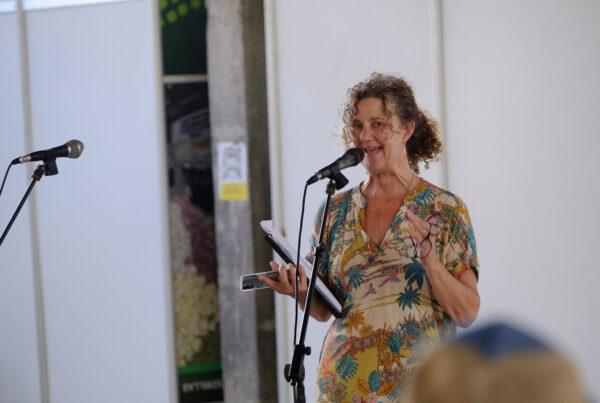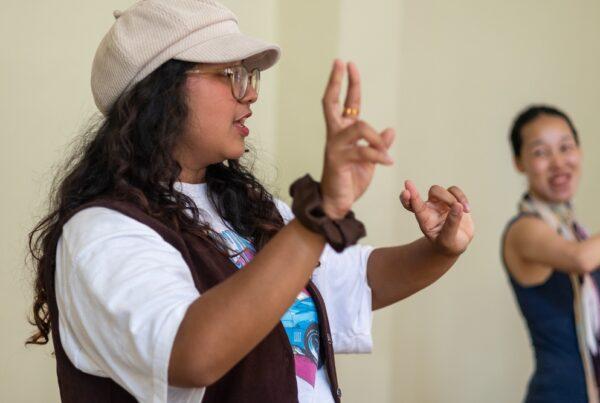On the first festival day, we saw performances (‘Bambi’ and ‘I am Akiko’) based on the theme of maternal love and coping with the grief of losing a mother. On the second day, the audience in Novi Sad had the opportunity to watch two non-verbal performances (‘SoundBird’ and ‘The Wind’) intended for the youngest age group. The first was the Hungarian monodrama ‘SoundBird’, made by author and director János Novák and performed by Melinda Megyes.

Before we delve into the world of the sound of nature and analyse the performance, it’s important to address that there was only one child in the audience. All other seats were taken by adults. This opens up a much broader question about the concept of this festival: for whom are the children’s performances within the program intended? While panels and conferences discuss the importance of a child’s right to culture and while verbally attempting to find a solution to the issue of half-empty theatres for children, a performance (emphasising once again) intended for children is watched by only one child. As the actress mentioned in a Q&A after the performance, this was her first time performing in front of almost an entirely adult audience.
But let’s move on to the performance that deserves to be seen by many more children. Theatre for those in diapers and slightly older than them is always a holiday for all the senses. ‘SoundBird’ focuses on sound and awareness that every object and different part of our body produces sound —singing, squeaking, laughing, stomping, rustling… We communicate with sound (the actress interacts with the audience only through the sounds), sound scares us (the actress is afraid of the sound coming from a huge box), we express feelings with sound, and we bring lifeless objects like pillows or toys to life with sound. At one point, with the help of a small wooden box, the actress teaches us about echo. The use of sound builds up from the very beginning. As the audience enters the space, the actress randomly gives them sticks to create rhythm. In the end, silence prevails, and only laughter remains.

Technology, specifically video (Ivó Kovács, Péter Márton responsible for interactive audio, and István Farkas, technical manager), resembles scenes that can only be observed by looking through a kaleidoscope. Three expressions, or circles on a black canvas, create different shapes and colours with which the actress plays with the help of sound and music (János Novák).
The play ‘SoundBird’ is an interactive, gentle and safe space for play. With the audience sitting on cushions on the floor, there is no boundary between the stage and the audience, and the entire hall becomes a place of sonic experimentation. After the (formal) end of the performance, the actress shares origami birds with the audience and allows them to try out her echo box, repeating voices and sounds, thereby exposing the complex mechanisms of theatrical technique. It’s not difficult to imagine that this enchanting experience captivates the youngest audience members and sparks a love for theatre.

Divna Stojanov is a dramaturg and playwright. She also writes theatre reviews.





